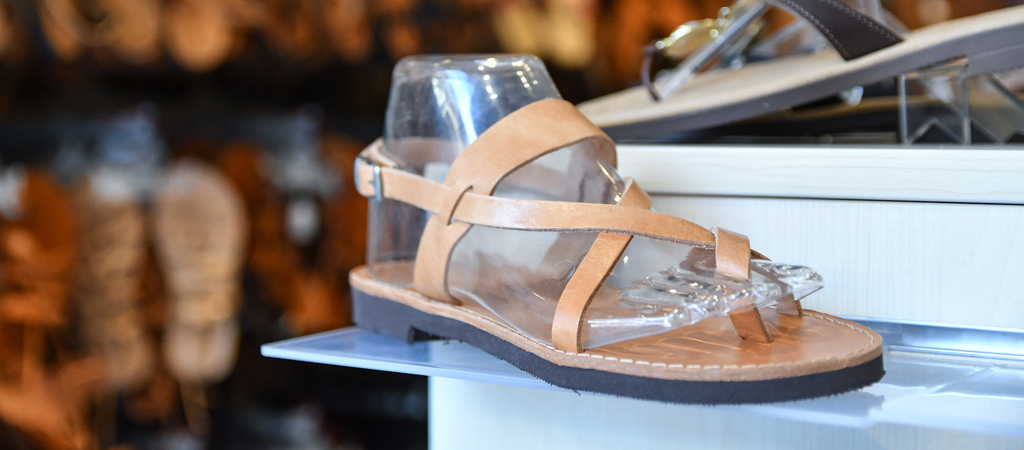
The sandals: uniqueness and history
The sandals are handmade therefore each and every pair is unique. Keep in mind that the color of the sandals you see online may slightly differ from reality due to many factors (lighting, device, etc.), while at the same time the leather darkens because of the sunlight as time passes (as is the case with our body skin) until it acquires beautiful color of dark honey.
How do I know that my sandals are of genuine leather?
Natural marks, color variations, small imperfections are all proof that the sandals you have bought are made of genuine leather and are handmade. Due to the fact that we are talking about natural material that breathes, it does not leave unpleasant smells and the foot does not sweat. For the same reason it cannot be completely the same in each piece. The color of natural leather (vachetta) is light brown, which darkens by the sun. Sandals “open” (become loose) gradually with the use because the leather itself has a natural elasticity, until they take the shape of the foot.
The Greek manufacturers we work with, offer us a lot of flexibility, so if the size you need is not available or you want a design in a specific color, shoe sole etc, contact us to discuss the possibility of a special order for you.
Each craftsman has different molds and moulds, so there is a possibility of small differences in their sizes. We recommend that you consult the corresponding size guide found on the webpage of each sandal to find your size. If you are between two sizes, we recommend that you choose the larger one. If you have any doubts about the size you should choose, please contact us.
The sandals’ history
The oldest known sandals (and the oldest known footwear of any type) are dated from at least 10,000 years. The word sandal derives from the Greek word sandalon. Their history goes back to ancient times; a well-known example is the God Hermes’s winged sandals. In general the ancient Greeks rarely wore closed shoes. They preferred sandals, as their purpose was to be protected by the soil and to keep their feet clean. In Ancient Greece, the sandals were also the most common type of shoes worn by women, who were spending most of their time at home.
The Greek sandals had a plurality of straps with which they were attached securely to the foot. The ancients usually used two types of sandals: the baxea, a sandal made of willow leaves, twigs, or fibres worn by comic actors and philosophers; and the cothurnus, a boot sandal that rose above the middle of the leg, worn principally by tragic actors. The sole of the latter was sometimes made much thicker than usual by the insertion of slices of cork, so as to add to the stature of the actors, especially when they were incarnating Gods, heroes or lords.


